
August 2020

2020 has been such an awkward year! Because of Covid19, we have not been able to hold horse shows, clinics or meetings and we have not been able to meet up with you - our horse friends. We hope all of you are keeping well and using this time to really ground yourself with your horse in good basic husbandry and horsemanship so that next year we can have great competition at our shows. In the meantime we think it is important to stay connected with you.
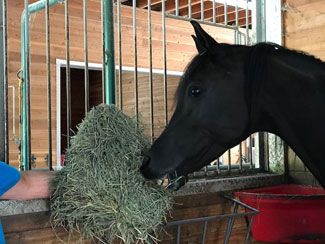 How many of you take for granted the bale of hay that you open and feed to your horses each day? Have you had the opportunity to watch the haying process from start to finish? For me, my “haying” involves lowering the hay elevator, having someone load the baled hay on to the elevator and then I take it and stack it in my hay loft. But there’s a whole lot of work that goes into that hay bale long before it gets to my farm. There are two members of our club – Gerald McDonald and Lisa MacGregor - who continue to hay on their farms.
How many of you take for granted the bale of hay that you open and feed to your horses each day? Have you had the opportunity to watch the haying process from start to finish? For me, my “haying” involves lowering the hay elevator, having someone load the baled hay on to the elevator and then I take it and stack it in my hay loft. But there’s a whole lot of work that goes into that hay bale long before it gets to my farm. There are two members of our club – Gerald McDonald and Lisa MacGregor - who continue to hay on their farms.
So, what is the whole haying process? I’m hoping by the time you finish reading this article you will realize that the price you pay for your bale of hay is a bargain when you take into account the several pieces of equipment required (including tractors), all of the steps taken and the time required.
The Process of Haying
1) Soil / Field Preparation
It starts back in the spring, when the ground is dry enough to withstand the weight of a tractor for the manure or fertilizers to be spread. Like all crops you have to have good nutrients in the soil to have a good yield. A good well-balanced slow-released fertilizer such as 18-18-18 is often used.
2) Cutting or Mowing the Hay
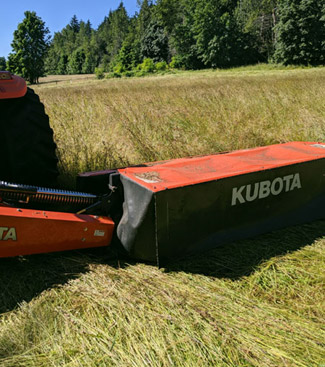
The cutting of hay depends on the stage of plant growth and the weather conditions. It has to be dry enough for the cut hay to dry out and you don’t want it to get rained upon. Generally it takes about 3 days of dry conditions to cure the hay for baling. The mower cuts the grass and puts it into windrows.
3) Tedding
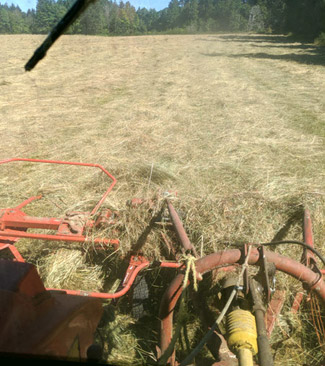
Once the hay is cut and on the ground it requires a period of drying time so that the hay doesn’t get baled with a high moisture content. Too much moisture will cause it to spoil or go moldy.
Tedding is the process of using an implement to lift or fluff up the hay once it has been cut to promote thorough drying of all parts of the hay. Tedding actually will move the bottom of the windrow up to the top to maximize air circulation.
Deciding when to use a tedder is based on multiple factors, such as the type of hay, the humidity and the weather. Some farmers like to cut hay in the morning and ted the hay in the afternoon. Others like to wait one full day after cutting to allow the hay at the top of the windrow to have adequate time to dry.
4) Raking
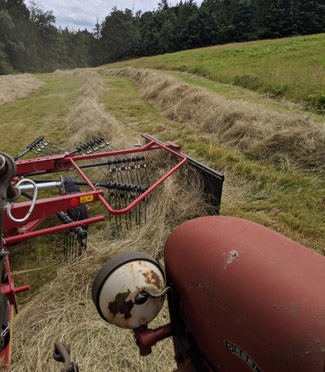
Raking is the final step in the drying process. Tedding and the wind can make a mess of the windrows and the rake pulls the hay back into neat rows, ready for baling.
5) Baling
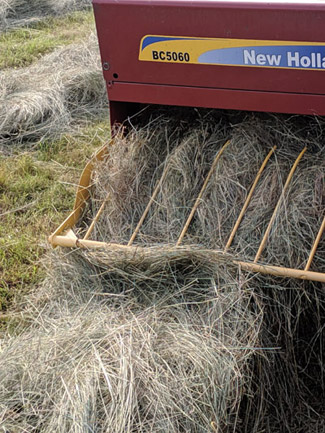
Most of us use square bales but I’m sure you have seen round bales in fields. In either instance, the hay is lifted into the baler’s reel at the front, then is packed into a bale chamber along the side of the baler. A plunger and knife move back and forth and in front of the bale chamber and a flywheel helps provide the extra force to fill and pack the hay into the chamber. Once it gains the appropriate length, the twine is wrapped around the bale and it is ejected out the back.
Square bales can be made into various sizes depending on the baler and they can weigh between 40 – 60 pounds depending on the type of hay and moisture content.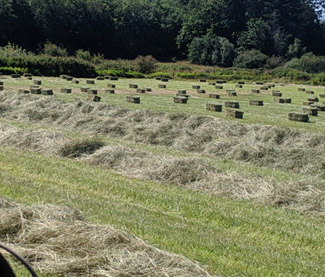 Round bales are typically over 1000 pounds and definitely require heavy equipment to move around.
Round bales are typically over 1000 pounds and definitely require heavy equipment to move around.
Some people gather the hay off of the field and take it home to store it - excellent exercise for you and your friends! Others (like me) have the hay delivered on the hay wagon and then put it away. Most farmers that put up a lot of hay have automatic hay wagons that pick up the bales in the field and assemble them into neat stacks that can be dropped off where they will be stored - no hands required.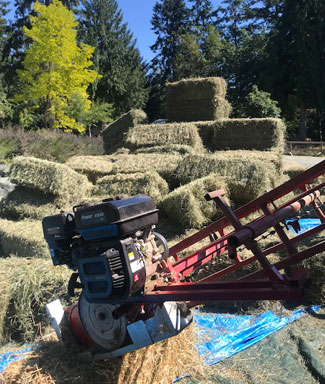
We all need to figure out how to squirrel away our hay to keep it in optimal condition for the long winters when the horses require it for good nutrition and bowel regularity.
from the pen of Rob Calnan, with
photos by Gerald & Meaghan
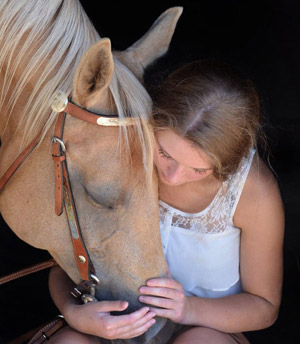 All the pictures on our website are old and everyone has seen them many times before.
All the pictures on our website are old and everyone has seen them many times before.
Help us out by sending in new pictures of you and your horse in training, out trail riding, or just hanging around. We would love to have them on the website for all to see!
Send photos and comments to: viaha_news@shaw.ca